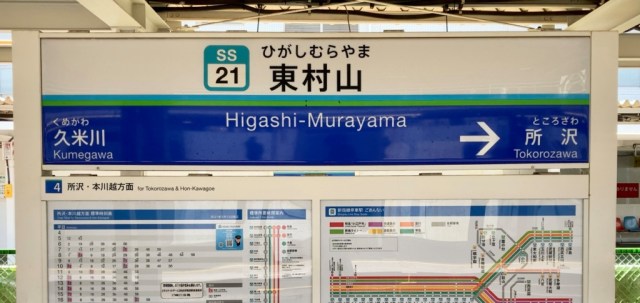
Ken Shimura put Higashimurayama on the map, and now Higashimurayama has put up a statue of him.
Like a number of other train stations in Japan, Tokyo’s Higashimurayama Station has a special chime that plays on its platform when trains are arriving or departing. The tune is Higashimurayama City’s local theme song, “Higashimurayama Ondo” (“Higashimurayama March”), but it’s not familiar only to nearby residents. People across Japan know the song, largely thanks to a cover performed by Ken Shimura, one of Japan’s most popular comedians, who was born and grew up in the area.
▼ The Higashimurayama Station chime
西武鉄道 東村山駅の発車メロディ「東村山音頭」!きょうから復活とのことで さっそく確認してきました。予想通り、多くの国分寺行きが発車する 国分寺線2番ホームが「ひがっしむ~らや~ぁま~ ♪♪♪」でした。 pic.twitter.com/M7wu8u3uTw
— 10月の列車 (@oct_rain1259) July 14, 2020
However, after nearly 50 years in show business, Shimura passed away in March of 2020 at the age of 70, becoming arguably Japan’s highest-profile loss of life to COVID-19. Recently, Higashimurayama saluted its hometown hero by erecting a life-size bronze statue of the comedian, and we took a ride out to see it for ourselves.
The statue is east to find. Right outside the station’s east exit is a traffic rotary, and on one side of it is a row of three Japanese zelkova trees which were planted in 1977 as Shimura’s cover of “Higashimurayama Ondo” was sweeping the nation. They’ve become known as the “Ken Shimura Trees,” and practically within the shade Of their boughs is where you’ll find the Ken Shimura statue.
One early concept had been to portray Shimura wearing the jeans and Yokosuka jacket that were his preferred fashion in his day-to-day life. Ultimately, though, the designers decided to dress his likeness in a kimono instead. The statue is going to be a permanent part of the neighborhood, and so they wanted to give a more Shimura timeless look than a Yokosuka jacket, a garment that’s gone in and out of vogue multiple times over the past 50 or so years. Seeing a comedian wearing a kimono isn’t so shocking in Japan either, as formal traditional dress is often worn for TV specials at the end of the year or on other important occasions.
Of course, with Shimura having worked in comedy for roughly half a century, a certain amount of silliness is entirely appropriate, and so the statue has him doing his trademark “aiiin” pose with which he regularly punctuated his gags. To get his proportions as close to Shimura’s as possible, the sculptor asked the comedian’s older brother, who’s of a similar build, to act as a model during the design phase.
Behind the statue, which was created after a crowdfunding campaign that raised 27 million yen (US$244,000) from 6,600 donors, is a wall with a composite photo of Shimura, plus a message from the city saying “Thank you for all the smiles and good feelings.”
Being located right outside of a station that runs into Tokyo’s downtown district, there’s a steady flow of people walking by, but on our visit, many of them stopped to appreciate Shimura’s warm smile and snap a photo.
Since we’d come all the way here, we decided to extend our time in Higashimurayama by checking an udon noodle restaurant called Kosegawa, which Shimura had visited as part of a TV program highlighting local sights and businesses.
You can tell right away that the visit was a big day for the restaurant, as they’ve got photos, a screen grab of the program, and even Shimura’s autograph hanging on the wall.
The udon tastes great, but as we happily slurped the noodles, we couldn’t help but realize that if it weren’t for Shimura’s unabashed love for his hometown, we wouldn’t have known about Kosegawa, and if not for being in the neighborhood to see his statue, we wouldn’t have had any occasion to step inside and give them our business. Odds are we’re not the only people that holds true for either.
So even if he’s passed on, Shimura is still here in spirit, and still giving the neighborhood something to smile about.
Photos ©SoraNews24
● Want to hear about SoraNews24’s latest articles as soon as they’re published? Follow us on Facebook and Twitter!
[ Read in Japanese ]

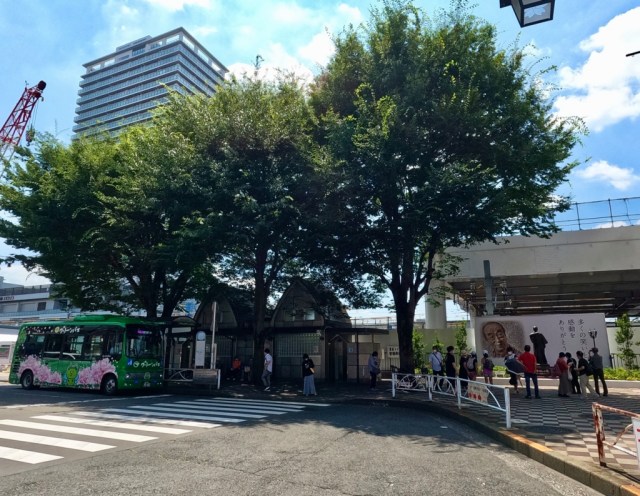
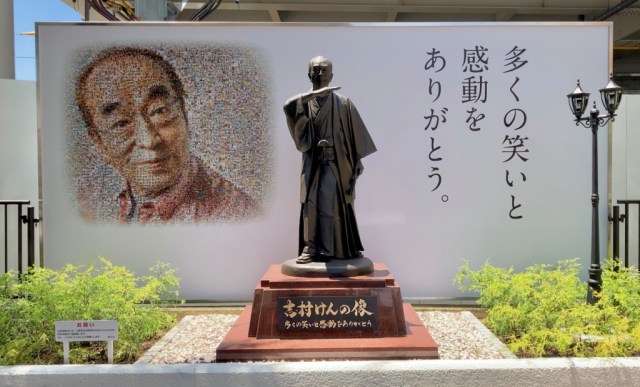
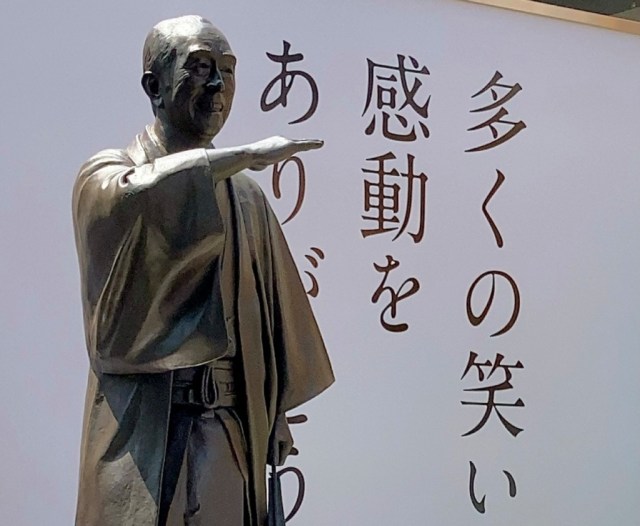
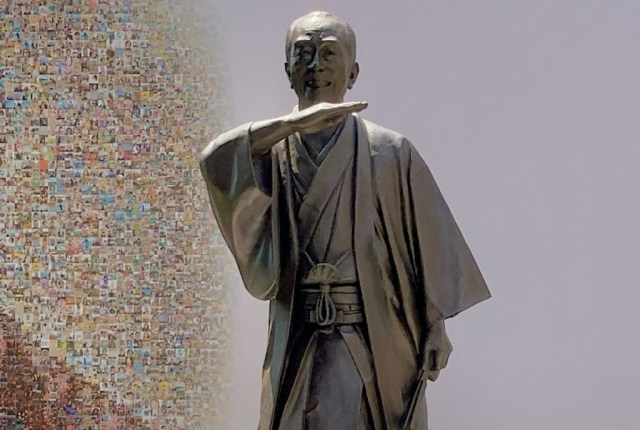
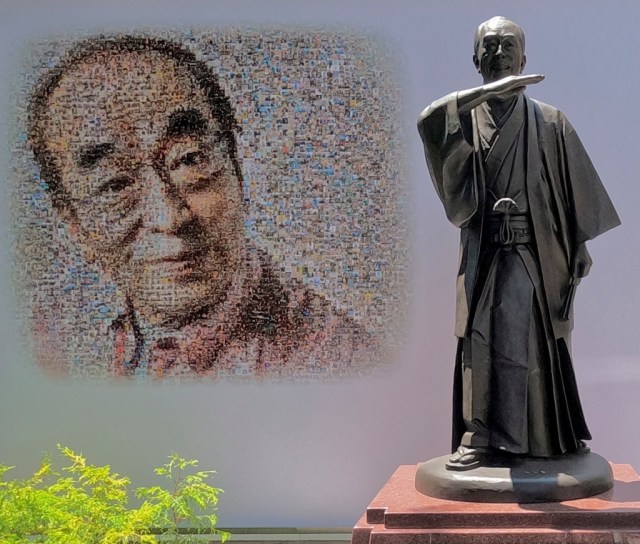
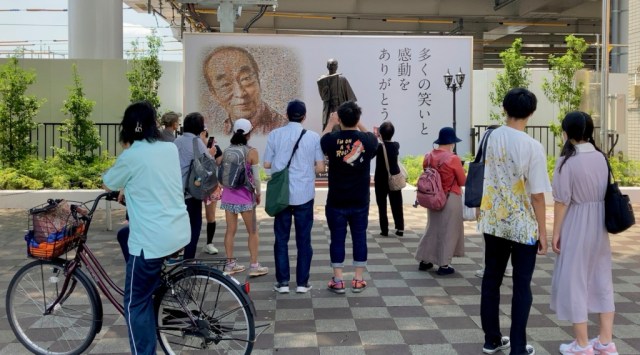

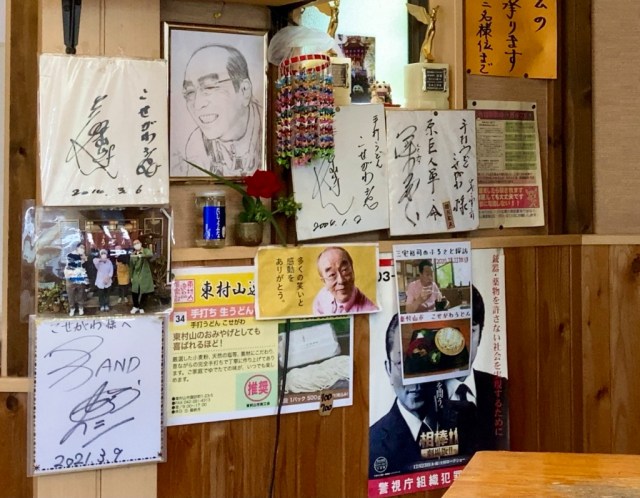
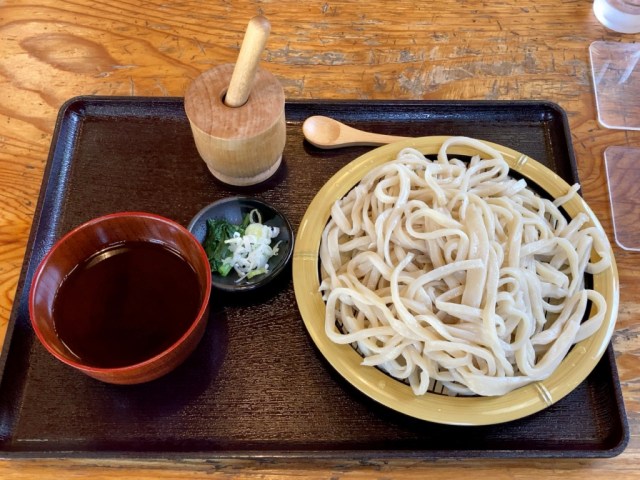

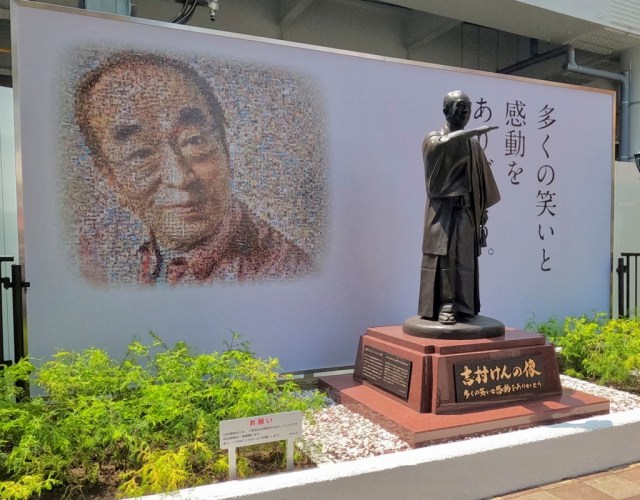
 Statue of comedian Ken Shimura erected a year after death from COVID-19
Statue of comedian Ken Shimura erected a year after death from COVID-19 Yokosuka’s Statue of Liberty gives the word liberty a whole new meaning
Yokosuka’s Statue of Liberty gives the word liberty a whole new meaning Gintama themed cafe coming to Ikebukuro! Get ready for some wacky Edo hijinks
Gintama themed cafe coming to Ikebukuro! Get ready for some wacky Edo hijinks Live-action Kiki’s Delivery Service film’s new images feature Tonbo, Osono
Live-action Kiki’s Delivery Service film’s new images feature Tonbo, Osono Eight awesome anime recommendations to close out 2020 with【Seiji’s World of Anime】
Eight awesome anime recommendations to close out 2020 with【Seiji’s World of Anime】 McDonald’s new Happy Meals offer up cute and practical Sanrio lifestyle goods
McDonald’s new Happy Meals offer up cute and practical Sanrio lifestyle goods All-you-can-drink Starbucks and amazing views part of Tokyo’s new 170 meter-high sky lounge
All-you-can-drink Starbucks and amazing views part of Tokyo’s new 170 meter-high sky lounge More foreign tourists than ever before in history visited Japan last month
More foreign tourists than ever before in history visited Japan last month Starbucks reopens at Shibuya Scramble Crossing with new look and design concept
Starbucks reopens at Shibuya Scramble Crossing with new look and design concept Beautiful Sailor Moon manhole cover coasters being given out for free by Tokyo tourist center
Beautiful Sailor Moon manhole cover coasters being given out for free by Tokyo tourist center Mister Donut ready to make hojicha dreams come true in latest collab with Kyoto tea merchant
Mister Donut ready to make hojicha dreams come true in latest collab with Kyoto tea merchant Is the new Shinkansen Train Desk ticket worth it?
Is the new Shinkansen Train Desk ticket worth it? The oldest tunnel in Japan is believed to be haunted, and strange things happen when we go there
The oldest tunnel in Japan is believed to be haunted, and strange things happen when we go there 10 awesome ice creams available from convenience stores in Japan
10 awesome ice creams available from convenience stores in Japan Arrest proves a common Japanese saying about apologies and police
Arrest proves a common Japanese saying about apologies and police Disney princesses get official manga makeovers for Manga Princess Cafe opening in Tokyo
Disney princesses get official manga makeovers for Manga Princess Cafe opening in Tokyo We try out “Chan Ramen”, an underground type of ramen popular in the ramen community
We try out “Chan Ramen”, an underground type of ramen popular in the ramen community Beautiful new Final Fantasy T-shirt collection on the way from Uniqlo【Photos】
Beautiful new Final Fantasy T-shirt collection on the way from Uniqlo【Photos】 Foreign English teachers in Japan pick their favorite Japanese-language phrases【Survey】
Foreign English teachers in Japan pick their favorite Japanese-language phrases【Survey】 There’s a park inside Japan where you can also see Japan inside the park
There’s a park inside Japan where you can also see Japan inside the park Japanese convenience store packs a whole bento into an onigiri rice ball
Japanese convenience store packs a whole bento into an onigiri rice ball Studio Ghibli releases Kiki’s Delivery Service chocolate cake pouches in Japan
Studio Ghibli releases Kiki’s Delivery Service chocolate cake pouches in Japan Japan’s bone-breaking and record-breaking roller coaster is permanently shutting down
Japan’s bone-breaking and record-breaking roller coaster is permanently shutting down New definition of “Japanese whiskey” goes into effect to prevent fakes from fooling overseas buyers
New definition of “Japanese whiskey” goes into effect to prevent fakes from fooling overseas buyers Foreign passenger shoves conductor on one of the last full runs for Japan’s Thunderbird train
Foreign passenger shoves conductor on one of the last full runs for Japan’s Thunderbird train Our Japanese reporter visits Costco in the U.S., finds super American and very Japanese things
Our Japanese reporter visits Costco in the U.S., finds super American and very Japanese things Kyoto bans tourists from geisha alleys in Gion, with fines for those who don’t follow rules
Kyoto bans tourists from geisha alleys in Gion, with fines for those who don’t follow rules Studio Ghibli unveils Mother’s Day gift set that captures the love in My Neighbour Totoro
Studio Ghibli unveils Mother’s Day gift set that captures the love in My Neighbour Totoro Domino’s Japan now sells…pizza ears?
Domino’s Japan now sells…pizza ears? New Japanese KitKat flavour stars Sanrio characters, including Hello Kitty
New Japanese KitKat flavour stars Sanrio characters, including Hello Kitty Sales of Japan’s most convenient train ticket/shopping payment cards suspended indefinitely
Sales of Japan’s most convenient train ticket/shopping payment cards suspended indefinitely Sold-out Studio Ghibli desktop humidifiers are back so Totoro can help you through the dry season
Sold-out Studio Ghibli desktop humidifiers are back so Totoro can help you through the dry season Japanese government to make first change to romanization spelling rules since the 1950s
Japanese government to make first change to romanization spelling rules since the 1950s Ghibli founders Toshio Suzuki and Hayao Miyazaki contribute to Japanese whisky Totoro label design
Ghibli founders Toshio Suzuki and Hayao Miyazaki contribute to Japanese whisky Totoro label design Doraemon found buried at sea as scene from 1993 anime becomes real life【Photos】
Doraemon found buried at sea as scene from 1993 anime becomes real life【Photos】 Tokyo’s most famous Starbucks is closed
Tokyo’s most famous Starbucks is closed One Piece characters’ nationalities revealed, but fans have mixed opinions
One Piece characters’ nationalities revealed, but fans have mixed opinions We asked a Uniqlo employee what four things we should buy and their suggestions didn’t disappoint
We asked a Uniqlo employee what four things we should buy and their suggestions didn’t disappoint Princesses, fruits, and blacksmiths: Study reveals the 30 most unusual family names in Japan
Princesses, fruits, and blacksmiths: Study reveals the 30 most unusual family names in Japan Studio Ghibli’s new desktop Howl’s Moving Castle will take your stationery on an adventure
Studio Ghibli’s new desktop Howl’s Moving Castle will take your stationery on an adventure This little-known temple in rural Japan has a giant Buddha bigger than Kamakura’s or Nara’s【Pics】
This little-known temple in rural Japan has a giant Buddha bigger than Kamakura’s or Nara’s【Pics】 Charapedia’s online poll reveals the top 20 female anime/manga characters not to provoke
Charapedia’s online poll reveals the top 20 female anime/manga characters not to provoke Keeping Totoro’s Forest safe: Anime legend Hayao Miyazaki volunteers in conservation event
Keeping Totoro’s Forest safe: Anime legend Hayao Miyazaki volunteers in conservation event Masks appear on statues of Japan’s loyal dog Hachiko, but only one gets to keep it【Photos】
Masks appear on statues of Japan’s loyal dog Hachiko, but only one gets to keep it【Photos】 How big (small?) is the smallest Great Buddha statue in Japan? Let’s visit and find out【Photos】
How big (small?) is the smallest Great Buddha statue in Japan? Let’s visit and find out【Photos】 Afro Buddha, usually only displayed one day a year, gets rare extended viewing until mid-October
Afro Buddha, usually only displayed one day a year, gets rare extended viewing until mid-October Limited-edition Batman Ninja figure is the epitome of stealth, justice and awesomeness
Limited-edition Batman Ninja figure is the epitome of stealth, justice and awesomeness Shibuya unveils two new local ramen dishes themed after famously loyal local dog Hachiko
Shibuya unveils two new local ramen dishes themed after famously loyal local dog Hachiko Foreign traveler’s heart broken as he learns his image of Akihabara is too good to be true
Foreign traveler’s heart broken as he learns his image of Akihabara is too good to be true A visit to “the most blessed kappa statues in all of Japan”【Photos】
A visit to “the most blessed kappa statues in all of Japan”【Photos】 Japanese gamer gets attention online with gorgeous NES and SNES decals for Forza Motorsport 6
Japanese gamer gets attention online with gorgeous NES and SNES decals for Forza Motorsport 6 Giant golden statue of Chairman Mao Zedong erected in the middle of nowhere in China
Giant golden statue of Chairman Mao Zedong erected in the middle of nowhere in China Yanmar reveals state-of-the-art tractor – You may never look at farm equipment the same
Yanmar reveals state-of-the-art tractor – You may never look at farm equipment the same My summer kimono Totoro! Ghibli mascot and Kiki co-star grace beautiful anime yukata【Photos】
My summer kimono Totoro! Ghibli mascot and Kiki co-star grace beautiful anime yukata【Photos】
Leave a Reply